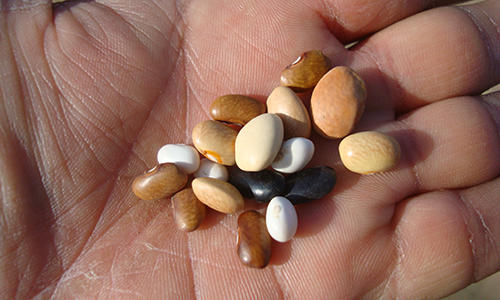Plant genetic resources and climate change

New book explores some of the latest perspectives about how genetic resources can contribute to achieving food security under the challenge of a changing climate.
Climate change is happening, as the latest report from the Intergovernmental Panel on Climate Change clearly stated, and it is affecting agriculture.
A new book published by CABI, Plant Genetic Resources and Climate Change, presents contributions from 34 scientists from all over the world, exploring some of the latest perspectives about how plant genetic resources can contribute to achieving food security under the challenge of a changing climate.
Three Bioversity International scientists contributed to the book. In chapter 2, Brian Ford-Lloyd and co-authors Mike Jackson and Bioversity International Honorary Fellow Jan Engels, provide a broad overview of issues concerning plant genetic resources conservation and use, including conservation approaches, strategies and responses that are more relevant under the threat of climate change. The researchers look into the great progress made in the past decades in the conservation and storage of crop germplasm in genebanks, and the new molecular tools that will help find traits useful to adapt crops to the changing climatic conditions.
In chapter 8, ‘Climate change and on-farm conservation of crop landraces in centres of diversity', Bioversity scientists Mauricio Bellon and Jacob van Etten highlight the complexity of climate change impacts on on-farm conservation: these impacts will vary by crop, and the environments and conditions present in its centre of diversity. On one side, climate change can affect the viability of on-farm conservation of landraces by changing the environmental conditions so much that growing a crop in its centre of diversity becomes non-viable and leading to its ‘extinction’ in particular regions or agroecosystems. At the same time, depending on the evolutionary capacity of landraces, on-farm conservation can provide options to farmers and society to adapt to climate change. The capacities depend not only on the genetic and biological characteristics of the crop, but also on the management, preferences and incentives of farmers that grow them.
The book is available at the  CABI online bookshop.
CABI online bookshop.
Watch this  video to find out more about the book.
video to find out more about the book.
